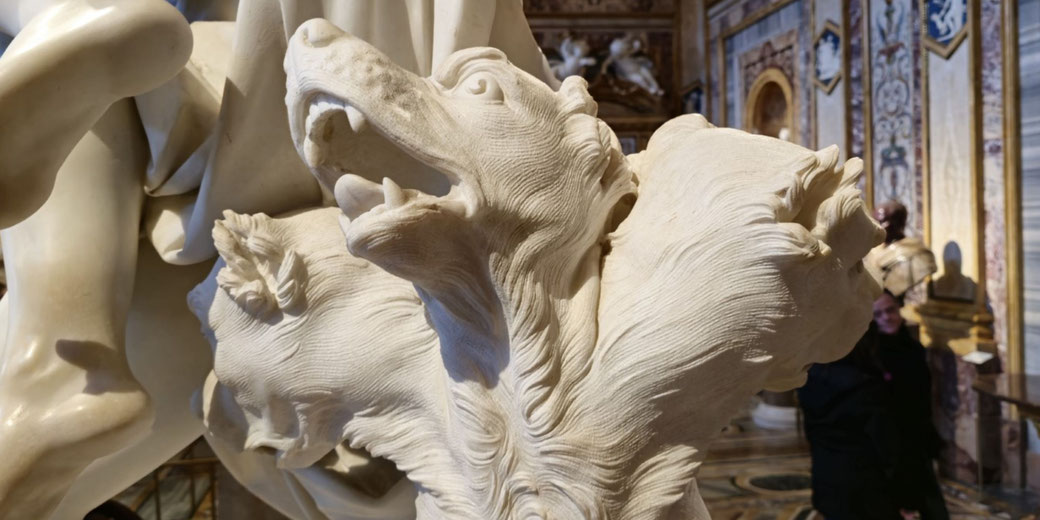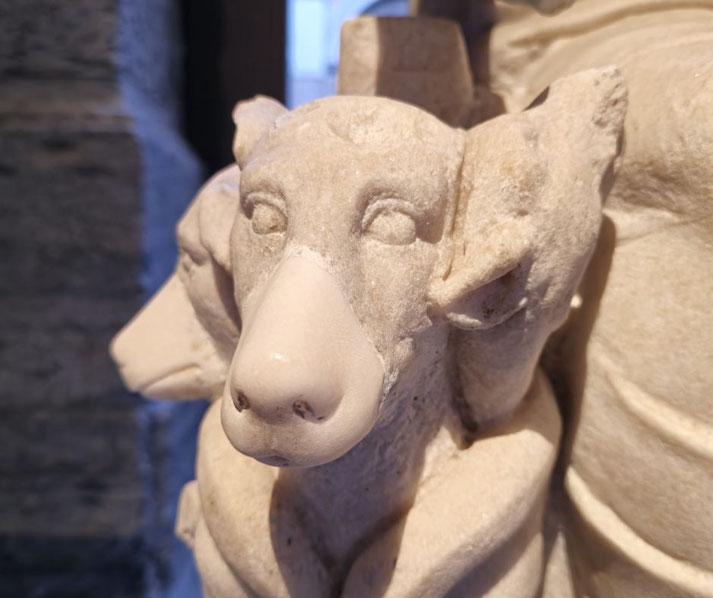Cerberus: The terrifying three-headed dog that guarded the underworld

In ancient Greek religion, it was believed that when a person died, they had to cross from the ‘land of the living’ to the 'land of the dead’.
However, a ferocious creature was thought to block the way to the afterlife. Named Cerberus, it was depicted as a canine with three heads, a serpent's tail, and a mane of snakes.
Its sole purpose was to prevent the dead from leaving and the living from entering. But if the living knew just a few vital secrets, they could overcome the guardian and pass safely through the daunting gates of Hades.
What did the Greeks believe about Cerberus?
Cerberus was the offspring of Typhon and Echidna, two formidable mythological figures who were often described as the father and mother of all monsters.
Typhon was a giant serpentine creature, while Echidna was half-woman and half-snake.
Together, they raised a line of monstrous beings that terrorized the length and breadth of the ancient world.
Among them was the multi-headed Hydra and the Nemean Lion, as well as Cerberus himself.
Even in the earliest references, Cerberus patrolled the entrance to Hades like a guard dog.
Specifically, in Hesiod's Theogony, written in the 8th century BCE, Cerberus was described with fifty heads, though later myths, such as those by Euripides and Virgil, settled on the more familiar three-headed form.
The gods tasked him with ensuring that the souls of the dead remained in their eternal rest and that no living soul could enter past him.
Strangely enough, Cerberus may have been an expression of xenia—the ancient Greek concept of hospitality—albeit in a twisted form.
While xenia involved offering protection and kindness to guests, Cerberus offered a harsh form of protection, ensuring that the sanctity of the Underworld remained intact.
This may have been a way for the Greeks to express the idea that death was an irreversible journey.
Despite the earlier text from Hesiod, Cerberus was most commonly described as a massive hound with three heads, each capable of snapping at intruders with lethal force.
His eyes were said to glow with a fierce, menacing light, and his breath was poisonous.
In addition to his three heads, some artistic representations on ancient pottery and sculptures show Cerberus with a serpent tail, and sometimes additional serpents sprouting from various parts of his body.
The most famous stories involving Cerberus
Cerberus featured prominently in several key myths of Greek mythology. One of the most famous was the final labor of Hercules.
As part of his Twelve Labors, which were imposed by King Eurystheus as penance for killing his family, Hercules was tasked with capturing Cerberus and bringing him to the mortal realm.
This feat required Hercules to descend into the Underworld, where he confronted Hades, the god of the dead, and asked for permission to take Cerberus.
In a rare moment of divine cooperation, Hades allowed Hercules to attempt the capture, provided that he used no weapons.
Thanks to his immense strength, Hercules managed to overpower Cerberus by wrestling the beast into submission and dragging him to the surface.
After completing his task, Hercules returned Cerberus unharmed to his former home.
Another significant myth featuring Cerberus was the tragic story of Orpheus and Eurydice.
Orpheus was a legendary musician who descended into the Underworld to retrieve his beloved wife, Eurydice, who had died from a snake bite.
Orpheus played a mournful tune on his enchanting lyre that softened the hearts of all who heard it, including Hades and Persephone.
His music also soothed Cerberus, which meant that he was allowed to pass unchallenged into the realm of the dead.
For the Greeks, this achievement was meant to represent the mystical power of art and music to transcend even the most fearsome obstacles.
Although Orpheus ultimately failed to bring Eurydice back to the world of the living, it hinted at the fact that Cerberus could be overcome with the right kind of knowledge.
Finally, in Virgil’s Aeneid, written around 29–19 BCE, Cerberus is described as a ferocious guardian subdued by the Sibyl of Cumae, who fed him a drugged honeycake to allow Aeneas safe passage into Hades.
For the entirety of Greek history, Cerberus maintained his reputation as a symbol of death's inevitability.
Modern depictions of Cerberus, from literature like Dante’s Inferno to contemporary fantasy genres, have maintained his role as a gatekeeper, showcasing his enduring impact on cultural perceptions of death.

What do you need help with?
Download ready-to-use digital learning resources
Copyright © History Skills 2014-2025.
Contact via email
With the exception of links to external sites, some historical sources and extracts from specific publications, all content on this website is copyrighted by History Skills. This content may not be copied, republished or redistributed without written permission from the website creator. Please use the Contact page to obtain relevant permission.





